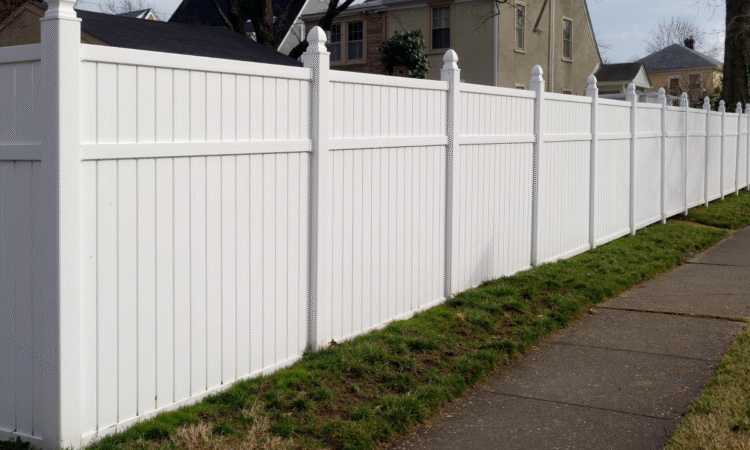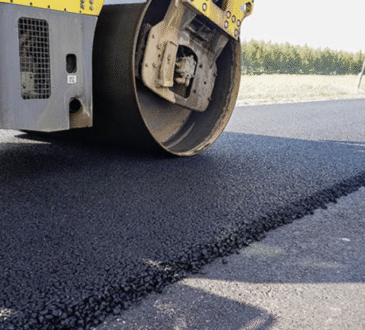
If you want your garden to feel private, look smart, and stay secure, the right fence will do the job. The trick is to match the design and build to the way you live. As a fencing contractor who has worked on hundreds of projects, I have seen what lasts and what fails. In this guide I break down what to choose, what to avoid, and how to plan a project that adds value from day one. If you are starting to research fencing near me, this will help you set a clear brief and get a result you are proud of.
What does value look like with fencing
Value shows up in three ways. Privacy so you can relax in your space. Security so children, pets, tools, and bikes stay safe. Kerb appeal so the property looks well kept and cared for. When a fence nails those three, homes feel more usable and buyers gain confidence. The good news is you do not need to overspend to get there. You need sound design, good materials, and solid fence installation.
Start by defining your aim
Every site is different, but a short plan helps every time. Decide if the main aim is privacy, security, or style. You can have all three, but knowing your priority guides height, post spec, and panel choice. It also keeps costs under control. If privacy is key, taller solid panels make sense. If style matters most, a mixed look with slatted sections and a feature gate can work well. If security leads, spend more on posts, fixings, and footing depth.
Materials that make a difference
Timber
Pressure treated timber is the most common choice. It looks warm and suits most homes. Use robust posts, decent gravel boards, and panels that use thicker framing. I suggest featheredge, closeboard, or a framed hit and miss panel. These balance privacy and wind flow. They also handle knocks better than light lap panels. With timber, maintenance matters. A light clean and a treatment after the first year keeps moisture out and colour even.
Composite
Composite panels are a good pick if you want low upkeep. Colour stays stable and the boards resist rot. Think about composite fencing cost in context. The upfront price is higher than timber, but the finish lasts and you avoid frequent treatments. Choose a system with posts and rails that suit the boards and allow for thermal movement. That protects the look and the warranty.
Metal
For front gardens and driveways, steel or aluminium can give a slim, modern line. It works well if you want a lower height or a mix with masonry. Secure fixings, decent coatings, and a gate with a quality latch make all the difference. Metal also pairs well with a timber privacy run at the side or rear. That gives you style to the street and privacy where you need it.
The hidden work that protects your spend
The ground decides if a fence lasts. Post depth, concrete quality, and drainage make or break a job. For standard runs, I advise a post hole of at least one third of the above ground height, with a wider base for stability. Use a lean mix concrete that supports the post, and form a slight fall at the top so rain runs away. Keep timber clear of soil with gravel boards. That gap stops splashback and rot. Strong rails, stainless or galvanised fixings, and panels fixed to allow a little movement will stop rattles and early splits.
Planning lines and boundaries
Before a post goes in, confirm where the boundary sits. Check deeds if you can. Speak to neighbours. Mark a guide line. This avoids disputes and keeps the project simple. If a fence sits near a public highway, or if you want a height over the common limits, check local rules. In many gardens, a rear boundary up to a set height is fine. Street facing work can be more strict. Good fencing contractors will flag this and help you avoid issues.
Repair or replace
Not every tired fence needs to go. Often the posts fail and panels lean, while rails and boards remain sound. In those cases, a post replacement or a concrete repair spur will save money and waste. When panels are rotten or frames are split, replacement is the better call. If you search fence repair near me, ask for a site visit and a straight verdict. A clear plan beats patching the same weak points each winter.
When to repair and when to replace
- Repair if posts are the only failure, panels are sound, and alignment is fixable.
- Replace if panels have soft spots, rails have pulled away, or posts have broken at ground level.
- Upgrade if the old layout does not give privacy or the height no longer fits how you use the space.
- Mix and match if a short run is weak but the rest is solid.
How height and style affect privacy
Height is the main lever for privacy. In many gardens, 1.8 m at the rear works well. On exposed sites, a solid panel stops sight lines. In windy spots, a hit and miss or slatted design reduces sail effect and lowers stress on posts. Trellis toppers are useful if you want a lighter look near a neighbour’s window. They break up views while letting light through.
Building for security without a fortress feel
Security starts at the gate. A sturdy leaf with a quality latch and a lockable option is worth the spend. Add a drop bolt on wide gates so they close true. Keep rails on the garden side if you can. That removes footholds at the public side. Firm posts and deep footings matter more than height alone. A leaner fence with weak posts is easy to push. A well set fence with a clear line is much harder to move. For sheds and side returns, consider steel posts with timber infill. This gives strength with a softer look.
Kerb appeal that pays you back
Street facing fencing frames your home. Go for upright lines, even spacing, and neat tops. A capping rail gives a finished look and sheds water. If you choose stain or paint, keep colours simple and in tune with brickwork, doors, and plants. In rear gardens, hide bins with a short screen. Blend levels with raised beds near taller panels. Small touches like these make a garden feel ordered and calm.
The role of gates and access
A fence is only as good as the gate. Use proper hinges, decent screws, and a latch that lines up. If you have bikes or mowers to move, set a clear opening width. For driveways, plan swing or slide space. Add a stop so the gate sits tight when closed. Line the bottom edge to avoid scuffing on stone or tarmac. If you have children or pets, fit a latch height they cannot reach and a return spring if needed.
What to expect from a sound fence installation
A good fence installation starts with tidy prep. Old panels and posts come out. Holes are dug to a set depth. Posts go in straight with a level and a string line. Concrete is mixed to the correct ratio and compacted around posts. Panels fit snug between posts without crush or gaps. All cuts get treated. The site is left clean. Offcuts and spoil are removed. You can see the line and you can feel the strength when you push on a post. That is the standard to expect.
How to pick among fencing companies near you
When you search fencing companies near me, you will find many names. Shortlist three. Ask who will do the work. Ask how long the run will take. Ask what posts, panels, and fixings they will use. Clear answers are a good sign. So is a written quote that lists spec and waste removal. Look for tidy photos of recent work and for reviews that talk about timekeeping and line accuracy. Price matters, but a neat straight line you never need to think about again is where the value is.
Why local knowledge pays
Local ground conditions shape decisions. Clay holds water and can swell. Sandy soil drains fast and can slump. In exposed spots, wind load changes post spec and panel choice. Teams who work the same patch each week know these patterns. They choose deeper footings where frost lifts, heavier rails where gusts hit, and slatted designs where solid panels would strain. If you are reading in West Yorkshire, you can speak with fencing contractors near me and ask how they manage wind and clay on your street. The answer should be specific.
Budgeting the project
Set a budget with a 10 percent buffer for surprises. Keep quality where it counts. Posts, footing depth, and fixings decide lifespan. Panels influence look, light, and privacy. Gates set daily use. A basic run with strong posts beats fancy panels with weak footings. If you are comparing quotes, make sure spec matches. A lower price is not a saving if it uses thinner posts or no gravel boards. For composite, factor the system’s trim pieces when you look at composite fencing cost. The extras bring the finish together and avoid water traps.
Timelines and lead times
Most home runs take one to three days, site access and length depending. A driveway gate or stepped line can add a day. Composite often takes longer as boards and trims interlock. Lead time changes through the year. Spring and early summer book fast. If you need work after a storm, teams get busy with emergency fixes. That is when a clear plan helps. Book early, confirm materials, and agree start dates in writing.
Maintenance that keeps value high
Even low upkeep fences benefit from care. Keep soil and mulch away from timber. Clean algae before it beds in. Tighten gate hardware each spring. Replace split capping rails before water spreads into the frame. Small jobs prevent big ones. For timber, a quality treatment keeps out moisture and slows UV fade. For metal, touch up chips before rust takes hold. For composite, wash and brush joints so debris does not trap water.
Matching fence type to garden layout
Small terraces gain from vertical lines and slimmer posts. They make space feel taller. Corner plots often need stronger corners and bracing. Slopes call for stepped or raked runs. Stepped lines give level tops. Raked lines follow the ground and can look smooth with slatted panels. Where neighbours sit higher, consider higher rear sections and lower side runs with trellis. This saves light while blocking sight lines.
How to brief your fencers near you
A good brief keeps surprises out of the job. Share where you want privacy most. Mark any pipes or cables. Confirm bin and mower access. Point out plants you want saved. Show the worst of the wind and the wet patches after rain. Ask for the waste plan. Ask about fixings. Ask for samples if colours matter. The more you share at the start, the better the result.
What a fence company near you should put in writing
A tidy quote lists post type and size, panel type, gravel boards, capping, gate spec, fixings, footing depth, removal of the old fence, and how the site will be left. It sets a start window and a target finish. It states how snagging works. It may offer a workmanship guarantee. The best teams write in plain English. That clarity shows up on site.
Typical pitfalls and how to avoid them
Rushing boundary checks causes headaches. So does setting posts too shallow to save time. Light panels on long exposed runs will flex and rattle. Screws that are not galvanised will stain timber. Gates without a drop bolt sag and bind. Most issues are simple to stop with a bit of planning and a clear standard for the install.
A note for families and pet owners
If you have a dog that digs, extra depth on gravel boards or a small toe board can stop escapes. If you have a jumper, avoid rails on the outside. For toddlers, check for small gaps near steps and sheds. Ask for gate latches set high or a simple lock with a key that lives out of reach. Safety is a series of small choices, not a single feature.
Choosing a fencing contractor you can trust
You want a team that turns up when they say they will, keeps a tidy site, and builds to a spec they can explain. Fencers near me should speak in a straight way about soil, slope, and wind where you live. They should be honest about what will work and what will not. If a panel style you like will strain in your garden, they should say so and suggest an alternative that still looks good. That is a sign of a contractor who cares about the result more than the sale.
Bringing it all together
A good fence is simple at heart. The line is straight. The posts are firm. The panels suit the aim. The gate swings and latches cleanly. It looks like it belongs with your home. It keeps what you want in and what you do not want out. You get privacy without gloom, security without harsh looks, and kerb appeal without fuss. Set those as your checks and you will make sound choices.
Final thought
If you are planning a project and you are at the stage of shortlisting a fencing contractor near me, use this guide to shape your brief, compare quotes, and avoid common pitfalls. A clear plan and a capable team will give you a fence that works hard every day. If you want to see how a local team approaches design and build, explore a few of our recent projects and the way we specify posts, panels, and gates with care. When you are ready, a simple call or message starts the process with a site visit and a clean plan that fits your budget and your garden. For practical next steps, you can look through our fence company near me page to view examples and outline a scope that suits your home.




